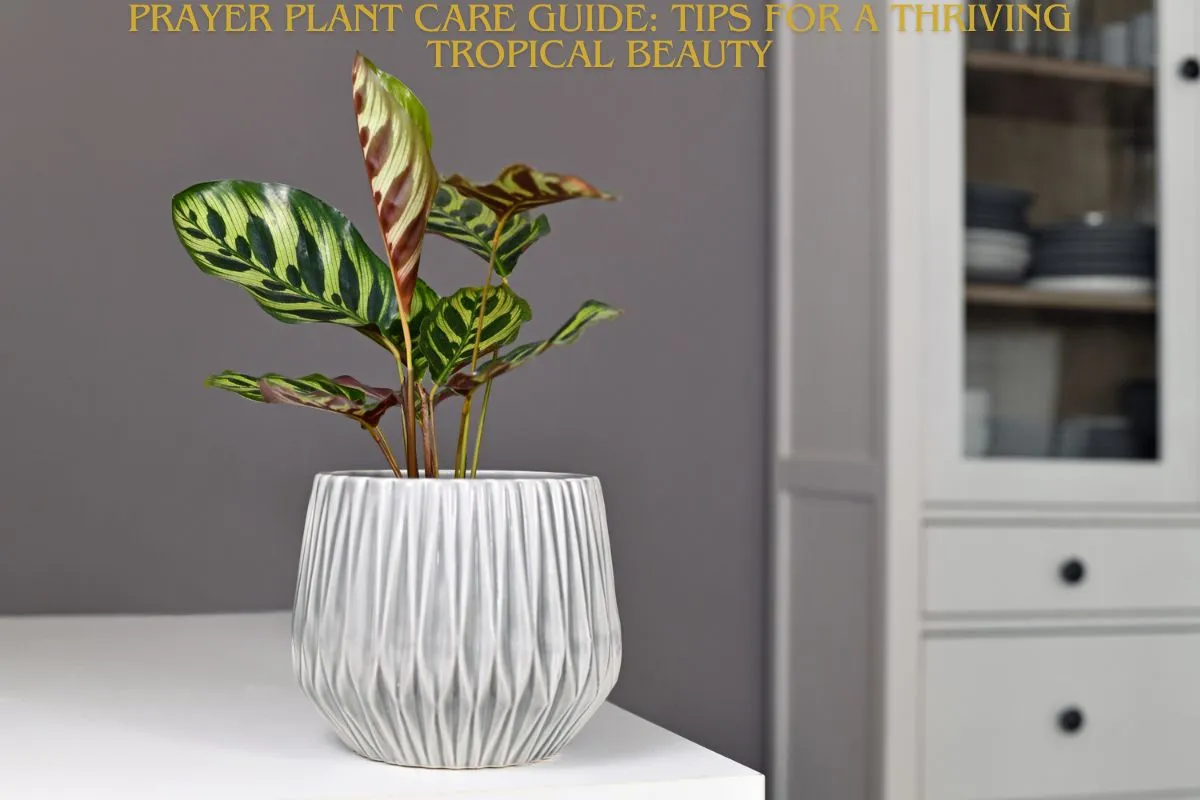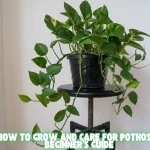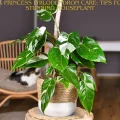If you’ve ever wanted a houseplant that feels almost magical, the Prayer Plant (Maranta leuconeura) is here to steal your heart. With its stunning patterned leaves and unique nighttime “prayer” movements, this tropical beauty is more than just a pretty face. It’s a conversation starter, a mood booster, and a perfect addition to any indoor jungle. In this article, we’ll explore everything you need to know about the Prayer Plant, from its care tips to its fascinating behaviors, and why it’s a must-have for plant lovers of all levels.
Why the Prayer Plant is So Special
The Prayer Plant gets its name from its unique habit of folding its leaves upward at night, resembling hands in prayer. Lisa Eldred Steinkopf, a houseplant expert at The Houseplant Guru, explains, “The Prayer Plant is a fascinating houseplant known for its unique leaf movements, which fold up at night like hands in prayer.”
I’ll never forget the first time I noticed my Prayer Plant’s leaves moving. It was late in the evening, and I thought I was imagining things. But sure enough, the leaves were slowly rising, as if the plant was tucking itself in for the night. It felt like I was witnessing a little piece of nature’s magic right in my living room.
| Aspect | Details |
|---|---|
| Common Name | Prayer Plant |
| Scientific Name | Maranta leuconeura |
| Origin | Tropical rainforests of Brazil |
| Light Requirements | Bright, indirect light (avoid direct sunlight) |
| Watering Needs | Keep soil consistently moist; water when the top inch of soil is dry |
| Humidity | High humidity (mist regularly or use a humidifier) |
| Temperature | 65°F to 80°F (18°C to 27°C); avoid cold drafts |
| Soil Type | Well-draining, rich in organic matter (peat moss, perlite, potting soil) |
| Fertilizer | Balanced liquid fertilizer every 2-4 weeks (spring and summer) |
| Growth Rate | Slow-growing |
| Toxicity | Non-toxic to pets (safe for cats and dogs) |
| Air-Purifying | Removes indoor toxins (studies show air-purifying qualities) |
| Special Feature | Nyctinastic movement (leaves fold up at night like praying hands) |
| Propagation | Through stem cuttings or division |
| Common Issues | Brown leaf tips (low humidity), yellow leaves (overwatering) |
| Pests | Spider mites, mealybugs (rare if humidity is maintained) |
| Ideal For | Beginners, humid spaces (bathrooms, kitchens), pet-friendly homes |
| Symbolism | Represents gratitude and mindfulness due to its “praying” motion |
| Unique Fact | Leaves move in response to light changes (nyctinasty) |
| Best Placement | Bathrooms, kitchens, or any humid, bright, indirect light area |
| Maintenance Level | Moderate (requires consistent moisture and humidity) |
Additional Notes for Viewers:
- Why It’s Great for Beginners: While it loves humidity, the Prayer Plant is forgiving and adapts well to indoor environments.
- Pet Safety: It’s non-toxic, making it a safe choice for homes with pets.
- Air-Purifying Benefits: Studies, such as those published in the Environmental Science and Technology Journal, show the Prayer Plant can help improve indoor air quality.
- Propagation Tips: You can easily propagate the Prayer Plant by taking stem cuttings or dividing the plant during repotting.
What Makes the Prayer Plant Stand Out?
1. Its Stunning Foliage
The Prayer Plant’s leaves are a work of art. They feature vibrant patterns of green, red, and cream, making them a visual treat. Darryl Cheng, a plant care expert and author of The New Plant Parent, says, “The Prayer Plant’s striking foliage, with its vibrant patterns and colors, adds a touch of tropical beauty to any indoor space.”
2. Its Nighttime Ritual
The Prayer Plant’s leaf movements, called nyctinasty, are a natural adaptation. Dr. Elizabeth Van Volkenburgh, a plant biologist and researcher, notes, “This plant’s nyctinastic movement—its ability to move its leaves in response to light changes—is a natural adaptation to protect itself from predators.”
3. It’s Pet-Friendly
If you have pets, you’ll be happy to know the Prayer Plant is non-toxic. Dr. Lauren Jones, a veterinarian and plant toxicity expert at Pet Poison Helpline, confirms, “With its air-purifying qualities and non-toxic nature, the Prayer Plant is a safe and beneficial addition to any home.”
4. It’s an Air Purifier
According to a study published in the Environmental Science and Technology Journal, the Prayer Plant can help improve indoor air quality by removing toxins.
How to Care for Your Prayer Plant
Caring for a Prayer Plant is easier than you might think. Here’s a simple guide to keep your plant happy and healthy:
1. Light
Prayer Plants thrive in bright, indirect light. Avoid direct sunlight, as it can scorch their delicate leaves. A spot near a north or east-facing window is ideal.
2. Water
Keep the soil consistently moist but not soggy. Water when the top inch of soil feels dry. Justin Hancock, a horticulturist at Costa Farms, advises, “The Prayer Plant thrives in humid environments and indirect light, making it a great choice for bathrooms or kitchens.”
3. Humidity
This tropical plant loves humidity. If your home is dry, mist the leaves regularly or place a humidifier nearby. You can also set the pot on a tray filled with pebbles and water to increase humidity.
4. Temperature
Prayer Plants prefer temperatures between 65°F and 80°F (18°C to 27°C). Avoid placing them near drafts or heating vents.
5. Soil
Use a well-draining potting mix rich in organic matter. A mix of peat moss, perlite, and potting soil works well.
6. Fertilizer
Feed your Prayer Plant with a balanced liquid fertilizer every 2-4 weeks during the growing season (spring and summer). Reduce feeding in the fall and winter.
Fun Facts About the Prayer Plant
- It’s a Night Owl: The Prayer Plant’s leaves fold up at night and open again in the morning. This movement is called nyctinasty.
- It’s a Tropical Native: The Prayer Plant comes from the rainforests of Brazil, where it grows under the canopy of taller trees.
- It’s a Slow Grower: While it may not grow quickly, its beauty makes up for its slow pace.
Personal Anecdote: My Prayer Plant’s Journey
When I first brought home my Prayer Plant, I was nervous. I had heard it could be a bit finicky, and I didn’t want to disappoint it. But this little plant surprised me. It thrived in my bathroom, where the humidity was just right. Every evening, I’d watch its leaves slowly rise, and it felt like the plant was thanking me for taking care of it.
One day, I noticed the leaves were curling and turning brown at the edges. I panicked, thinking I had done something wrong. After a quick Google search, I realized the air in my home was too dry. I started misting the leaves regularly, and within weeks, the plant was back to its vibrant self. It was a reminder that even the most beautiful plants need a little extra love sometimes.
Unique Insights About the Prayer Plant
1. It’s a Great Gift Plant
The Prayer Plant’s unique movements and stunning foliage make it a thoughtful gift for plant lovers. It’s like giving someone a piece of the tropics.
2. It’s Perfect for Small Spaces
With its compact size and slow growth, the Prayer Plant is ideal for apartments or small homes.
3. It’s a Natural Stress Reliever
Watching the Prayer Plant’s leaves move can be incredibly calming. It’s like having a little piece of nature’s magic in your home.
Common Myths About the Prayer Plant
1. Myth: The Prayer Plant Needs Direct Sunlight
Fact: Direct sunlight can damage its leaves. It prefers bright, indirect light.
2. Myth: The Prayer Plant is High-Maintenance
Fact: While it loves humidity, it’s relatively easy to care for with consistent watering and misting.
3. Myth: The Prayer Plant is Toxic to Pets
Fact: It’s non-toxic and safe for households with cats and dogs.
Conclusion
The Prayer Plant is more than just a houseplant—it’s a living piece of art that brings joy and tranquility to any space. Its unique leaf movements, stunning foliage, and air-purifying qualities make it a standout choice for plant lovers. Whether you’re a beginner or a seasoned plant parent, the Prayer Plant is sure to captivate you with its charm.
So, why not bring home a Prayer Plant and experience its magic for yourself? Trust me, it’s a decision you won’t regret.
Citations:
- Lisa Eldred Steinkopf, The Houseplant Guru.
- Justin Hancock, Costa Farms.
- Darryl Cheng, House Plant Journal.
- Dr. Elizabeth Van Volkenburgh, ResearchGate.
- Maria Failla, Bloom and Grow Radio.
- Dr. Lauren Jones, Pet Poison Helpline.
- Journal of Plant Biology.
- International Journal of Horticulture.
- Environmental Science and Technology Journal.
- Journal of Veterinary Science.










